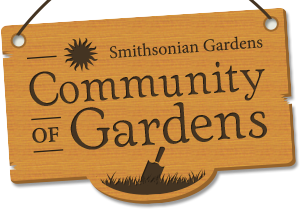Eight Mile-Wyoming Gardens
Description
Detroit was still a burgeoning industrial center in 1918 when John and Elizabeth Crews ended a journey “through six states seeking a home” and settled in the city. As part of the Great Migration, when African Americans began moving to Detroit in large numbers from the South for employment opportunities and an escape from Jim Crow segregation, the Crews and many others were faced with the challenge of making a place and building community in a new environment.In Detroit, many stopped their gardening and food growing practices because urban-industrial life offered new opportunities to escape toiling on the land. Others changed and adapted their horticultural practices. Although the East Side of the city where many migrants first lived was quite dense, some managed to cultivate gardens here, while others moved to areas with more space, such as a neighborhood at Eight Mile Road and Wyoming Avenue.
Here, where the Crews eventually moved, residents often had a different vision of the suburban ideal, raising chickens and growing gardens that often included vegetables, such the 'Kentucky Wonder' green beans the Crews canned to eat throughout the winter. Corn was also a common sight in the neighborhood, along with an informal system of community gardening. As one resident told a visitor, they had no trouble with people stealing from their garden because, “we just plant a little more than we need each year to take care of that.” Alternately, “if we run low, we just get a few [ears of corn] off of somebody else’s. We all know that. We don’t care. We’re friends out here!”
Not everyone found this more rural way of life appealing, however. During the 1920s and 1930s, the Detroit Urban League, an organization founded to assist African American migrants in Detroit, often sponsored flower garden contests (complete with prizes of cash or flower bouquets) in this neighborhood to beautify what they considered to be unsightly “yards,” not gardens. According to one observer, during the spring contest houses in the neighborhood were “surrounded by riots of bloom…porches and fences sag under the weight of rambler roses, honeysuckle, and clematis; the yards bloom with myriads of flowers.”
While images of these gardens are sparse, bits and pieces from the written record help to illuminate the ways African Americans used gardens to create a sense of place, belonging, and community in Detroit, a tradition that continues with community gardening projects in the city today.
Photos Show
House in the Eight Mile-Wyoming neighborhood of Detroit, 1941
Image of a house with a corn field in the Eight Mile-Wyoming neighborhood of Detroit, 1941. The wall behind separates the area from a white subdivision. Library of Congress, Prints & Photographs Division, FSA/OWI Collection, LC-USF34-063747-D. [View Additional File Details]


